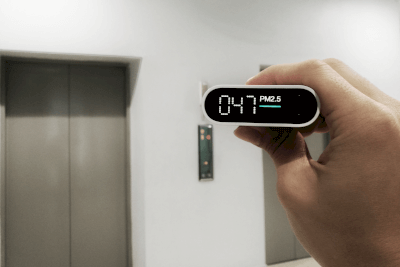What Is a Dust Monitor?
 A dust monitor, also known as a dust analyzer, is a device used to measure particulate matter in gases. These devices, commonly referred to as dust meters, are employed in monitoring air quality in various environments, including workplaces and building management systems.
A dust monitor, also known as a dust analyzer, is a device used to measure particulate matter in gases. These devices, commonly referred to as dust meters, are employed in monitoring air quality in various environments, including workplaces and building management systems.
Another related device is the particle counter, which measures particulate matter in gases in environments requiring higher cleanliness levels, such as pharmaceutical and medical device manufacturing clean rooms, and in isolators used for quality control.
Uses of Dust Monitors
Dust monitors are typically used in areas with a noticeable presence of airborne particles, contrasting with particle counters designed for cleaner environments. They are ideal for general indoor or outdoor spaces where cleanliness levels are not strictly controlled, as well as in more particle-dense settings like factories.
These monitors are also crucial in measuring fine particulate matter like PM2.5 in the air. However, measuring oil mists and similar substances can be challenging due to potential contamination inside the equipment and varying responses to different types of mists.
Principles of Dust Monitors
Dust monitors utilize various measurement methods, with light scattering and piezobalance (piezoelectric balance) being the most prominent. The light scattering method, which involves measuring scattered light when it interacts with particles in a gas, is a commonly used technique in dust measurement. The amount of scattered light correlates with dust concentration, providing a basis for estimation.
However, the light scattering method assumes uniformity in particle properties. While this allows for consistent measurements when the assumption holds true, mixed particle properties necessitate verification of the measurement’s validity each time.
Conversely, the piezobalance method determines dust concentration by measuring the mass of particles collected on a balance. This method’s advantage lies in its independence from particle properties. The drawback is the need for regular cleaning due to the balance’s limited particle collection capacity.